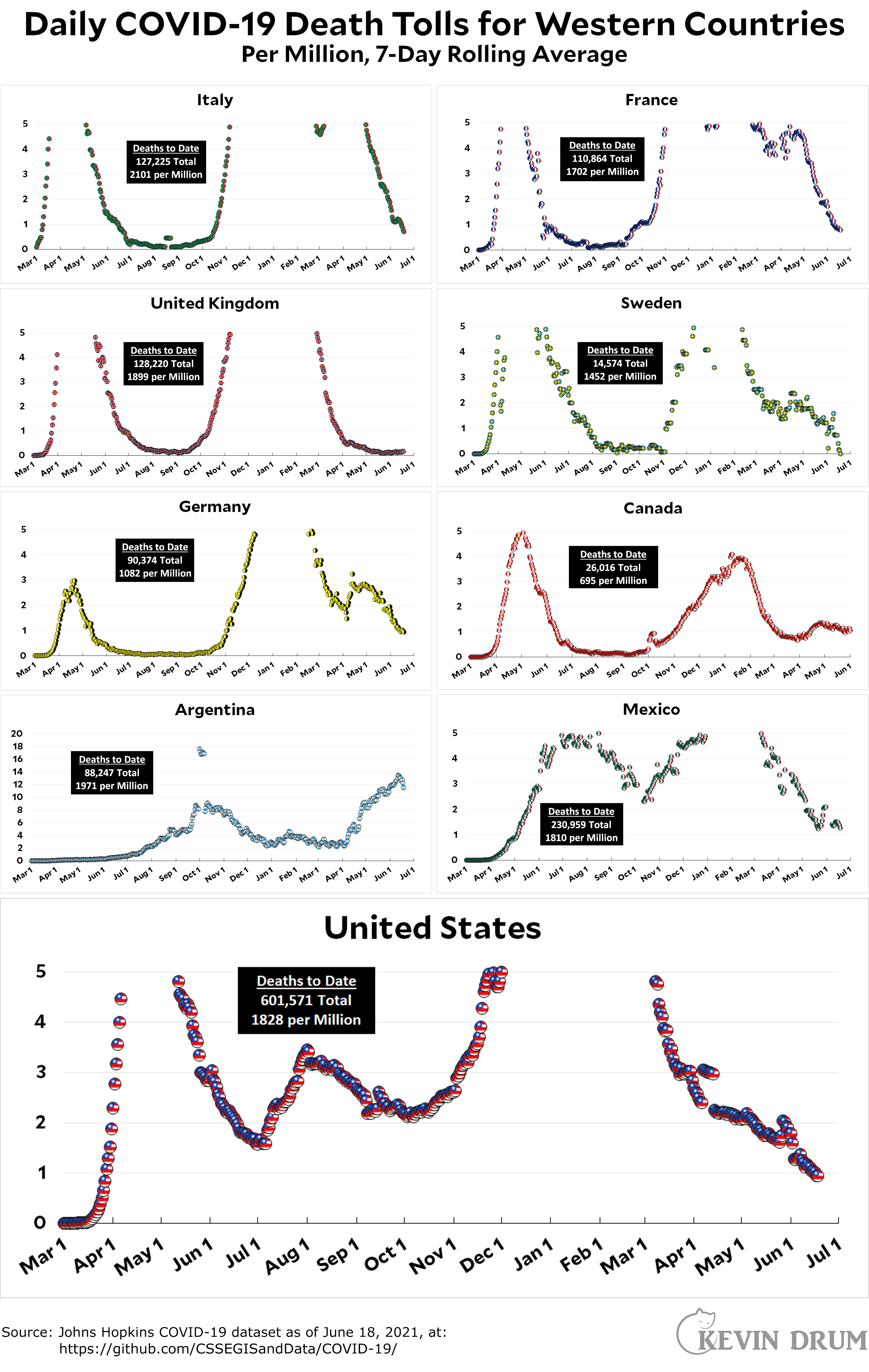Here’s the officially reported coronavirus death toll through June 21. The raw data from Johns Hopkins is here.
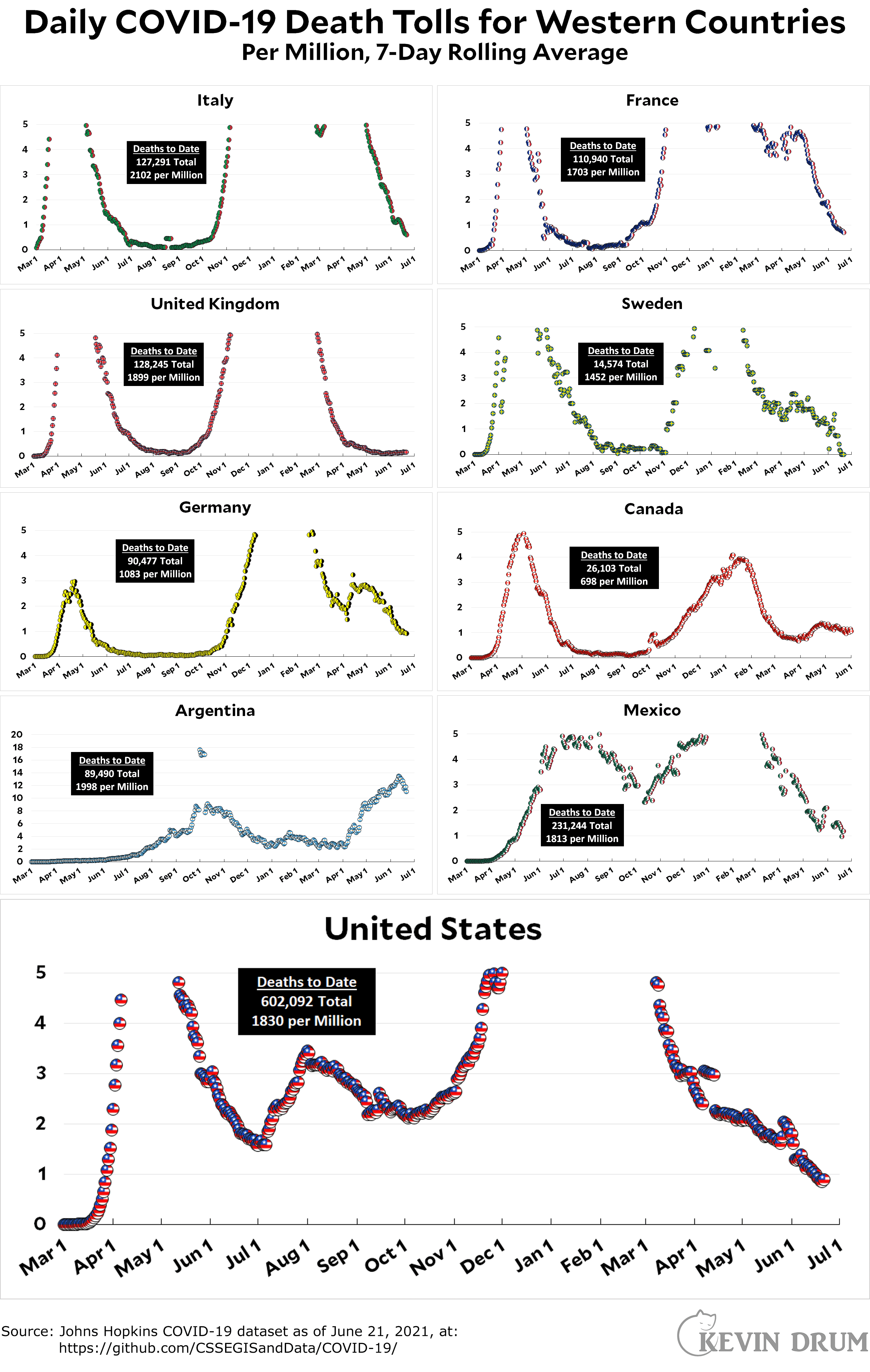
Cats, charts, and politics

Here’s the officially reported coronavirus death toll through June 21. The raw data from Johns Hopkins is here.

I happened to come across a Guardian piece about the controversy swirling around pop singer Billie Eilish. Here it is:
Billie Eilish has apologised after a video surfaced appearing to show her mouthing a racist slur....In the video, Eilish appears to mouth an anti-Asian slur featured in Tyler, the Creator’s 2011 song Fish, and is filmed speaking in an affected voice. In her apology, Eilish, the youngest artist to ever record a James Bond title track, said she was “13 or 14” in the videos and did not know at the time the slur was a derogatory term.
Holy cow! The Guardian isn't shy about printing obscenities, so this must be something really bad. But what? Other articles I googled seemed similarly shy, so finally I just looked up the lyrics for "Fish":
Slip it in her drink and in the blink
Of an eye I can make a white girl look chink...
That's it? This whole affair, lengthy apology and all, is because Eilish mouthed the word chink five years ago when she was 14?
We really all have too much time on our hands, don't we?
Our ongoing argument over the filibuster represents the entire American political system in a nutshell. Just as the fear of our political opposites is generally greater than our confidence in our allies, both major parties are reluctant to get rid of the filibuster because their fear of what the other side could do with a majority vote is greater than their excitement about what their own side could do with it.¹
One way to think of this is that it's a straightforward consequence of what behavioral economics tells us about decisionmaking under uncertainty, namely that we hate losses about twice as much as we value comparable gains. If that's the case, then one side or the other will finally kill the filibuster not when the risk of backfiring goes away (it never will) but when the betting odds suggest that the relative gain to their own side seems to be roughly twice as big as the gain to the other side.
It will never be Republicans who come to this conclusion, since the filibuster is fundamentally a conservative rule that helps to preserve the status quo. It will happen only when enough Democrats finally decide that they don't have much to lose.
And when will that happen? On the one hand, Mitch McConnell is helping things along by making it explicit that Republicans will use the filibuster on everything, which makes it clearer every year just how much Democrats are losing because of it. On the other hand, the structural advantage that Republicans have in Congress makes a Democratic sweep (House, Senate, Presidency) unlikely, and that's the only time the filibuster matters.
That's the basic calculus. My own view is twofold. First, I've always objected to the filibuster on the simple grounds that legislatures should decide most things by majority vote. In fact, I'm not sure the filibuster is even constitutional. Second, I have zero doubt that liberals would gain far more than they'd lose from ditching it. This might or might not be true in the first few years after its demise, but it would certainly be true in the long run.
Why am I so confident? I suppose it's because I'm a true believer in social democracy. With the filibuster gone, Democrats would slowly but surely enact social democratic reforms and people would like it. This would make Democrats more popular and we'd then get more Democrats and more social democracy. Rinse and repeat.
Might I be wrong? Sure. But it's what I believe.
¹Got that? This is a surprisingly difficult concept to summarize plainly. But it's true of both liberals and conservatives, at this point in time at least.
The Washington Post informs us today that retail workers are quitting at a record pace these days. Why? The pandemic, of course: "In interviews with more than a dozen retail workers who recently left their jobs, nearly all said the pandemic introduced new strains to already challenging work: longer hours, understaffed stores, unruly customers and even pay cuts."
Maybe. But here's what the recent history of retail quits looks like:
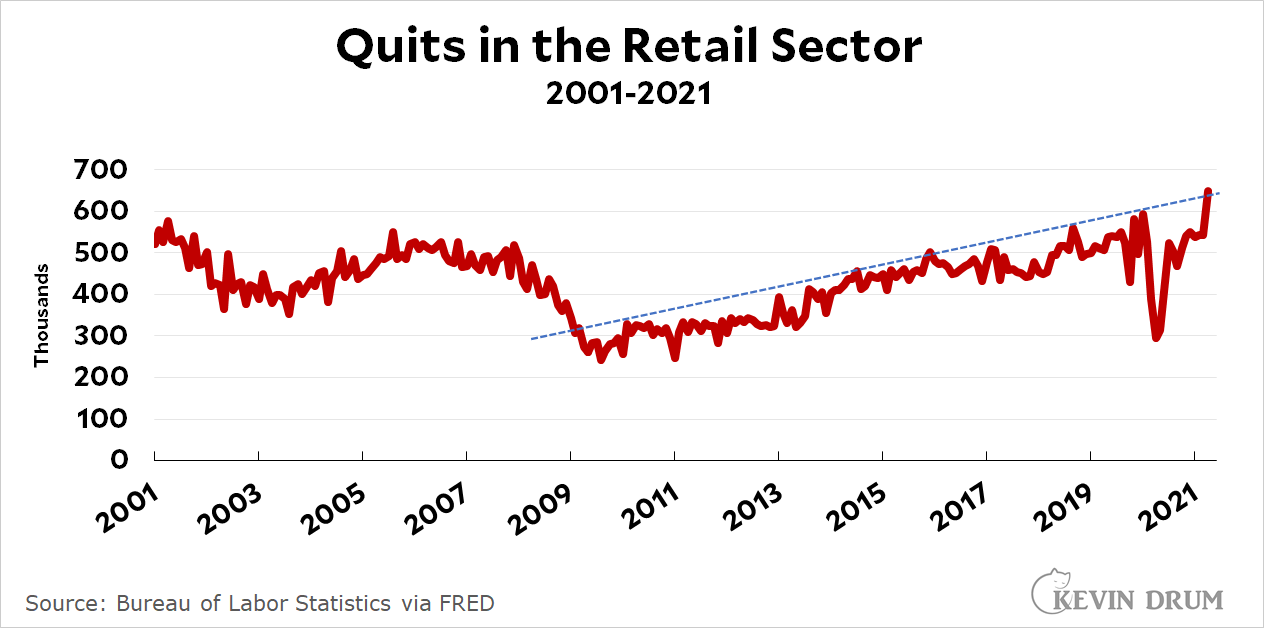
As you can see, the rate of quits always rises during economic expansions, so it's no surprise that they're rising now. What's more, the series is fairly noisy, and the April numbers are in line with all the brief spikes over the past decade.
So what's going on? The passage I've highlighted below should be tattooed on every reporter's forehead:
“We’re seeing a wider understanding that these were never good jobs and they were never livable jobs,” said Rebecca Givan, a professor of labor studies and employment relations at Rutgers University....It is too soon to tell, she said, whether the latest exodus reflects a long-term shift away from retail work. Some employees, for example, may return to the industry once child care is more readily available and other pandemic-related challenges ease, but others are turning to industries where workers are in high demand.
It's too soon to tell! This is true of practically everything, and yet news outlets are bursting with stories about how the pandemic has changed everything.
Well, maybe it has, but a single month or two of data just as the economy is reopening is literally meaningless. It's going to take six months or so for everything to settle down, at which point we'll be able to take stock of labor power, goods shortages, evictions, economic growth, remote work, and everything else we're interested in.
In the meantime, for God's sake, don't pay attention to this crap. If retail quits keep spiking for six months, then we'll know something. If they fall back to their old trendline, we'll also know something. But a single spike in April? Spare me.
In 2012 the Diocese of Orange purchased the Crystal Cathedral in Garden Grove and renamed it Christ Cathedral. Then they spent several years raising money and redesigning the interior to make it suitable for Roman Catholic services. All this time it was closed to the public. Then came another year or two when it remained closed, allegedly because of "organ tuning." Then came COVID-19. Finally, a couple of months ago I checked again and it appeared to be semi-open.
I say semi-open because there's no real way to know when it's open outside of scheduled services. However, despite being told by a security person that it was always closed, it turned out that, in fact, it was kept open semi-randomly before and after baptisms, funerals, and so forth. So I finally had a chance to go inside and see what it looked like. Here's a gallery of pictures so you can see it too.
First off, here's a panoramic view of the interior:
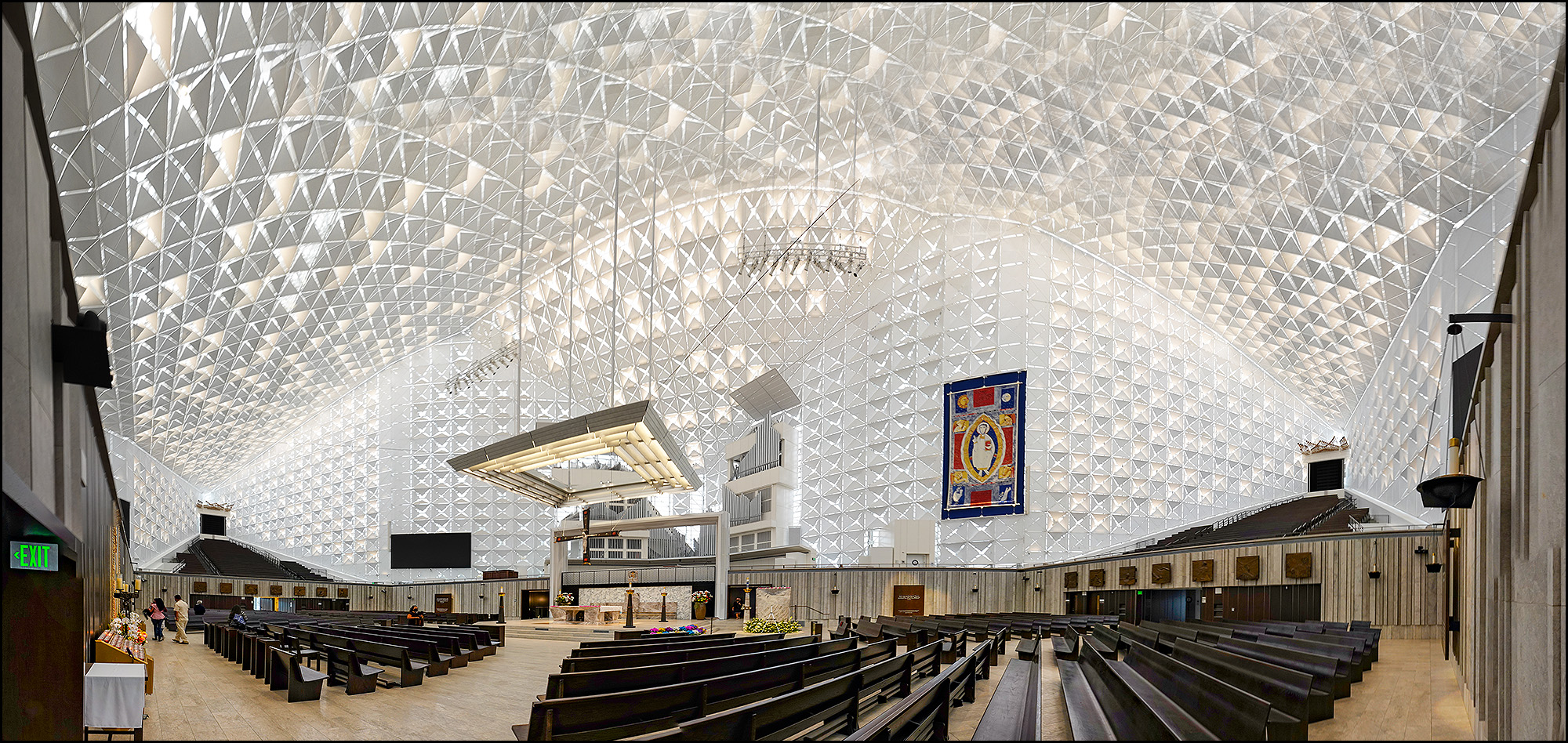
This space is much smaller than before. Basically, the diocese built offices around the perimeter and reduced the size of the church itself considerably. Just for comparison, the old church had a capacity of 3,000 while the new one has a capacity of 1,000. Here's a closer look at the altar:
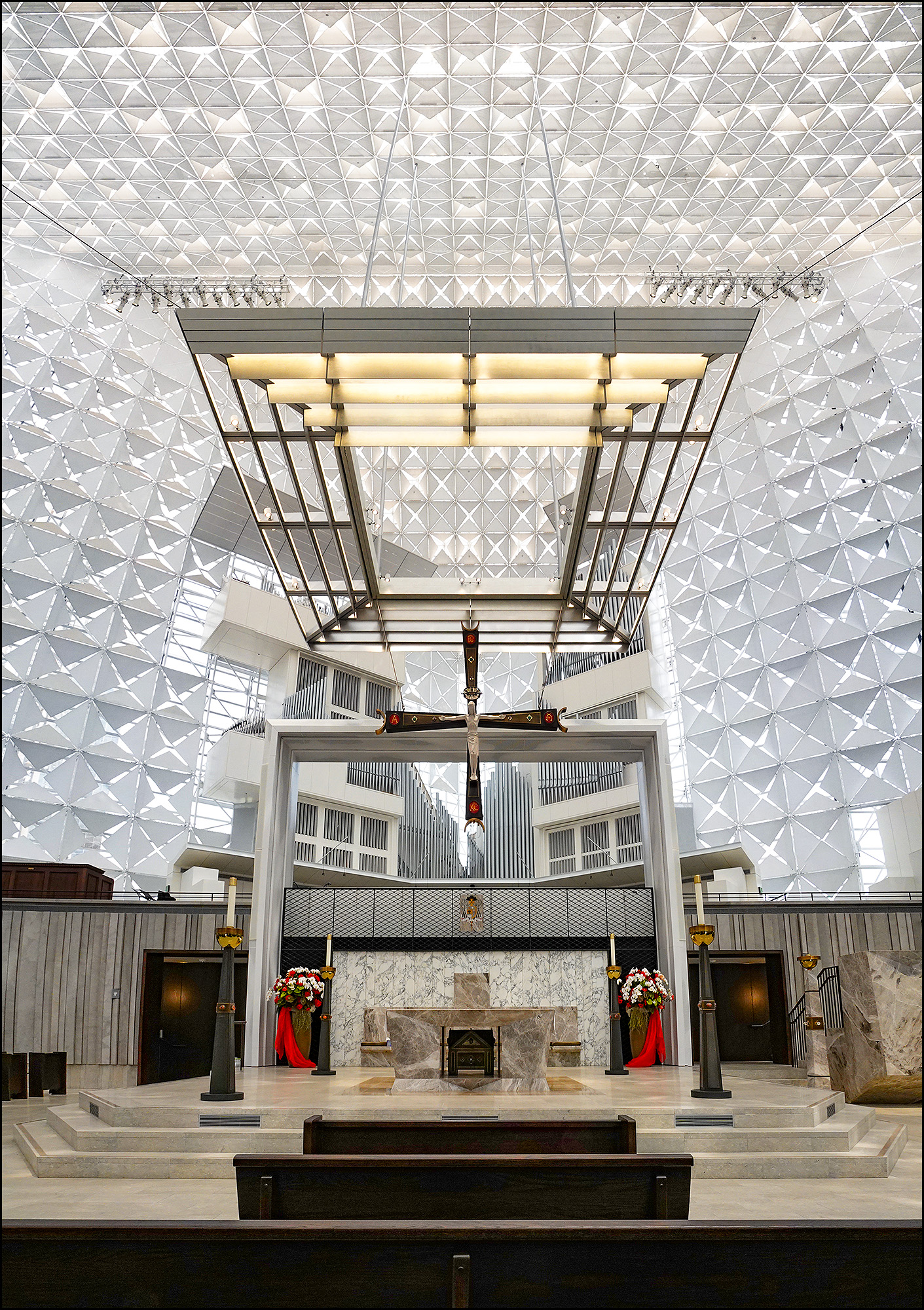
Here's the exterior. It hasn't changed much:
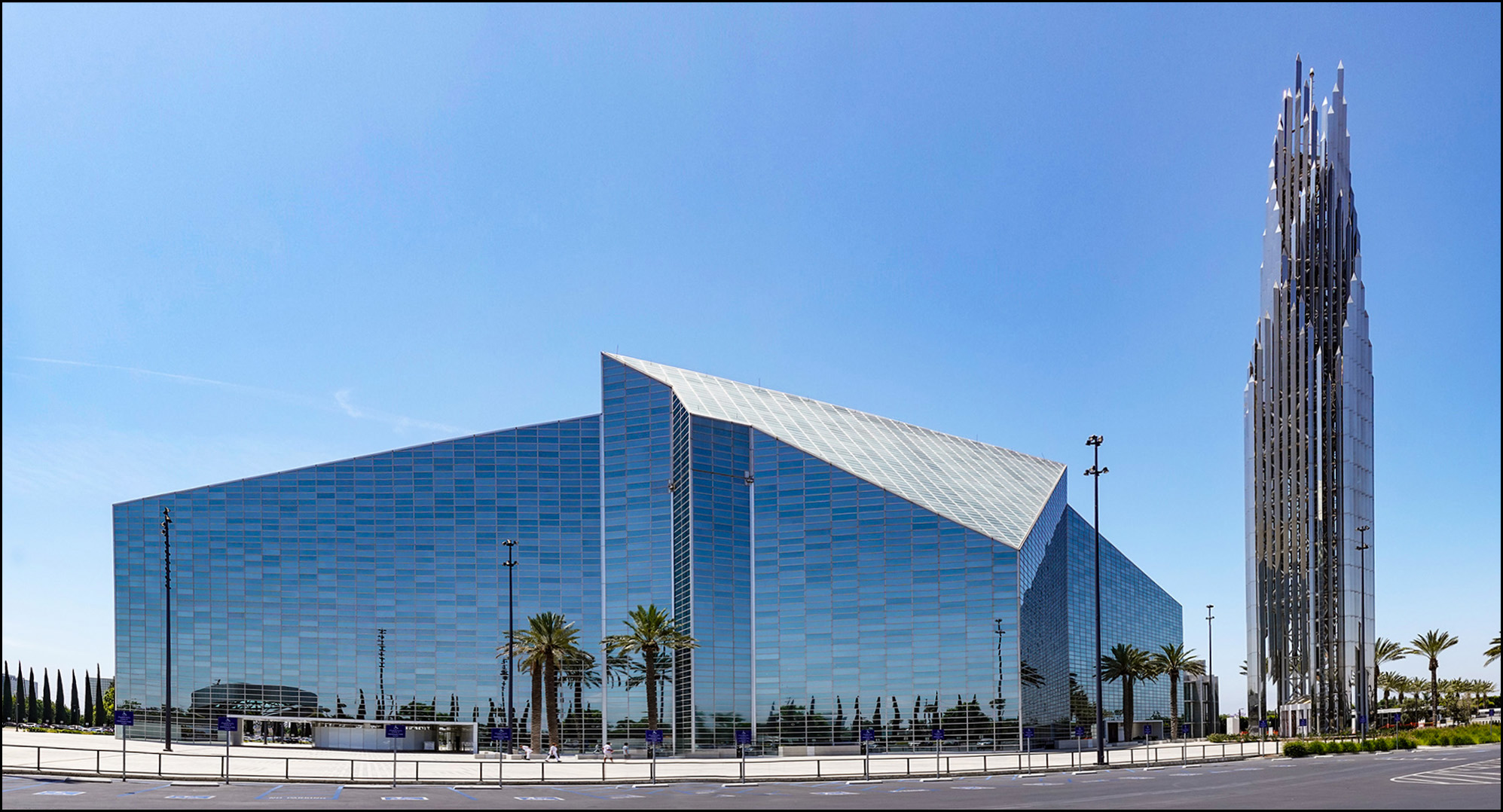
And here's the exterior looking directly up from the western end. FWIW, this is a panoramic shot and a very difficult one to get right.

Finally, here are two sculptures on the cathedral campus. Moses, as always, looks pissed. Jesus is ministering to some young native Americans, which is a bold move considering the church's currently battered reputation in the history of early California.
UPDATE: Those kids in the Jesus sculpture sure look like California natives, but I guess I jumped to conclusions. This sculpture actually represents the miracle of the loaves and fishes.
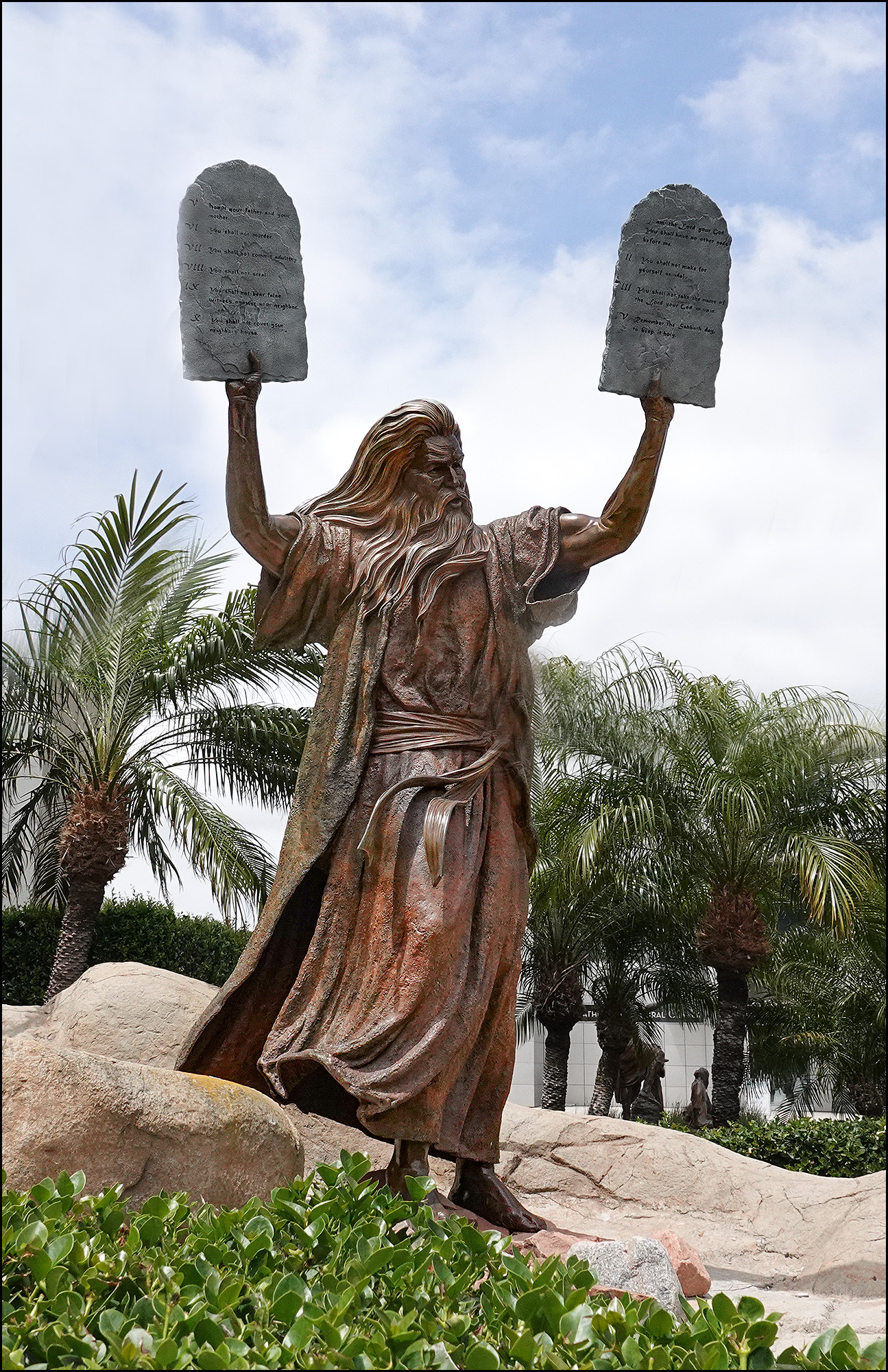

Here’s the officially reported coronavirus death toll through June 20. The raw data from Johns Hopkins is here.

L.A. traffic behavior is changing. Is post-pandemic gridlock inevitable?
This is followed by a few unconvincing attempts to make a big deal out of some tiny changes, but the answer is pretty clear already:
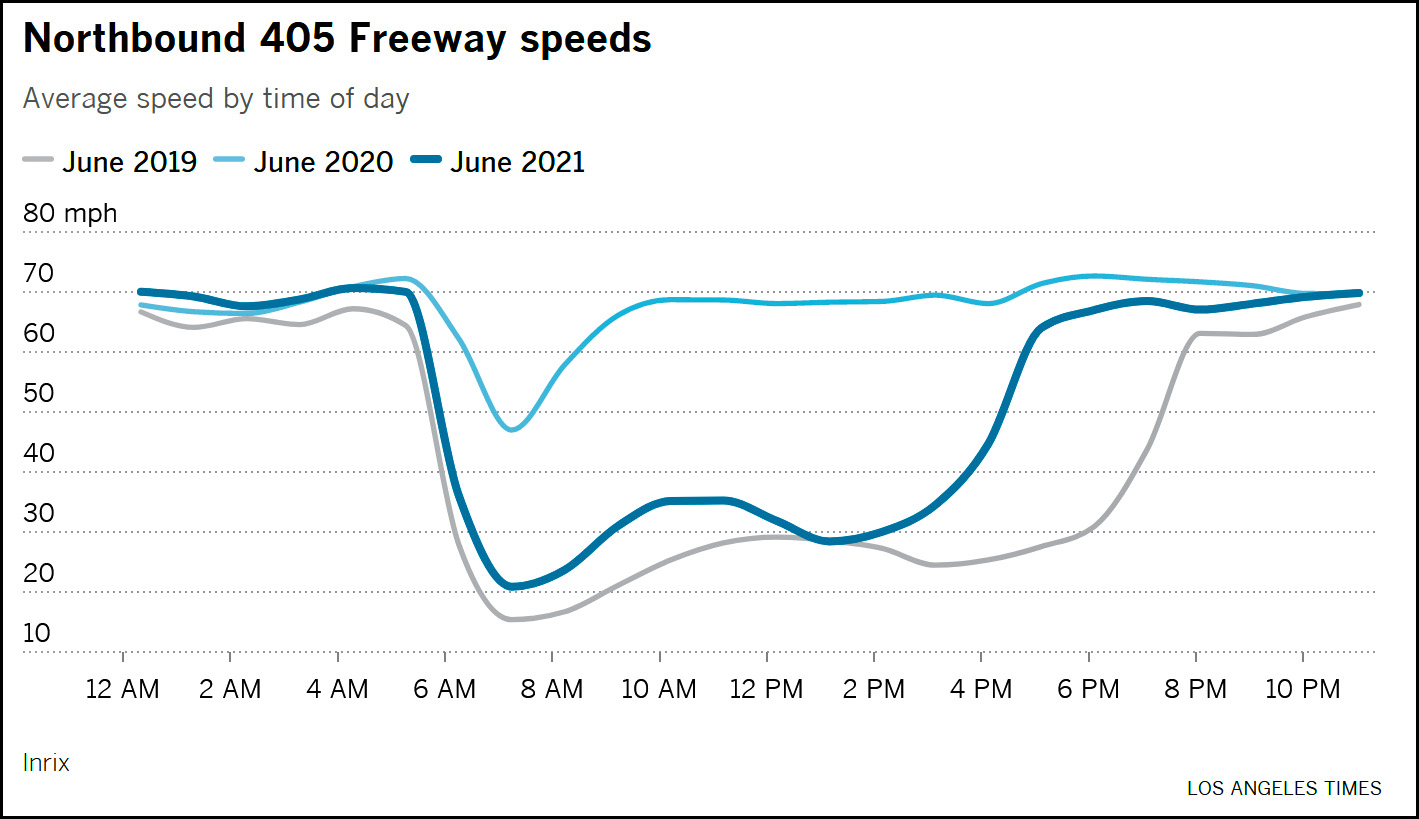
The state had barely even opened up in June and already traffic was practically the same as it had been in 2019. In another month you won't be able to tell the difference.
And while we're on the topic, can we please, once and for all, give up on the "COVID has changed life forever" genre? It hasn't. It's already obvious that things will return almost completely to normal over the next few months and that the experience of living through a pandemic has neither enriched our lives nor taught us to cherish our friends and neighbors even more. All it's done is make us cranky.
Yesterday I learned something new:

This is not the greatest picture of a hummingbird that I've ever taken, but out of my thousands of frames of hummingbird pictures I've never before seen one with its beak open. In fact, I didn't even realize their beaks could open.
But they can, and apparently they open mainly when hummingbirds are trying to catch insects to eat. How about that?
Here’s the officially reported coronavirus death toll through June 19. The raw data from Johns Hopkins is here.
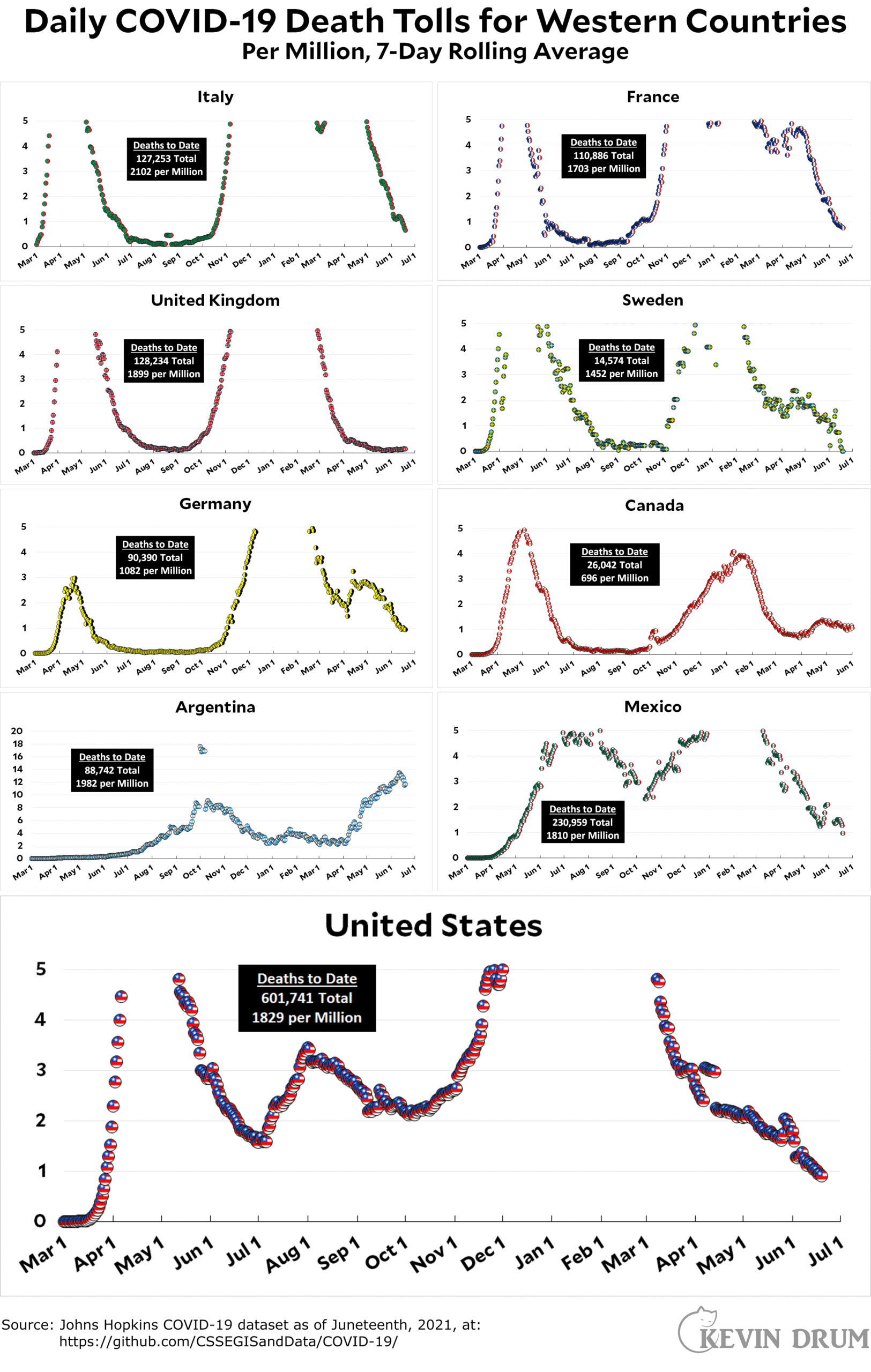
Sweden has reported zero deaths for the past seven consecutive days. This seems unlikely, but I can't find any explanation for it.
Here’s the officially reported coronavirus death toll through June 18. The raw data from Johns Hopkins is here.
